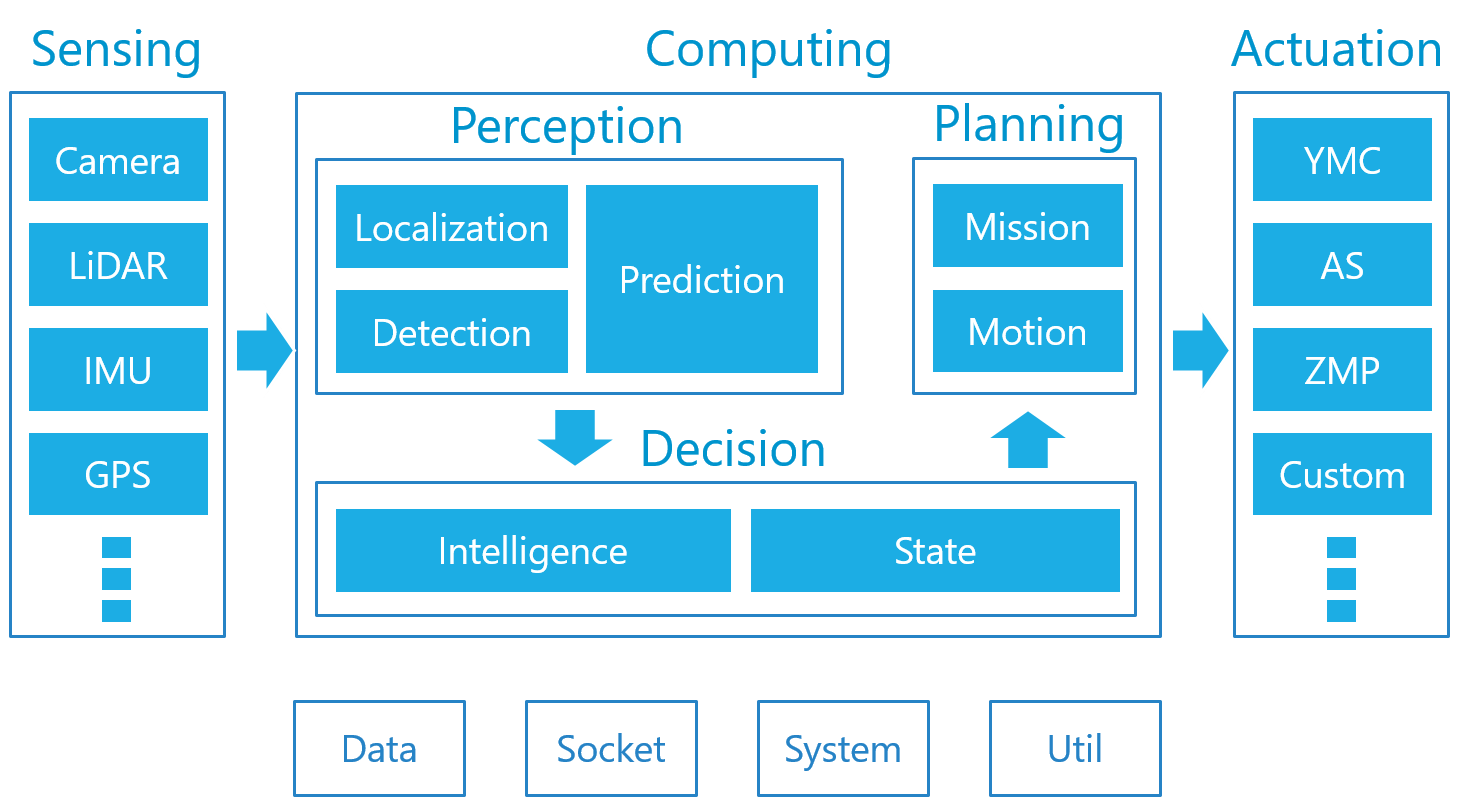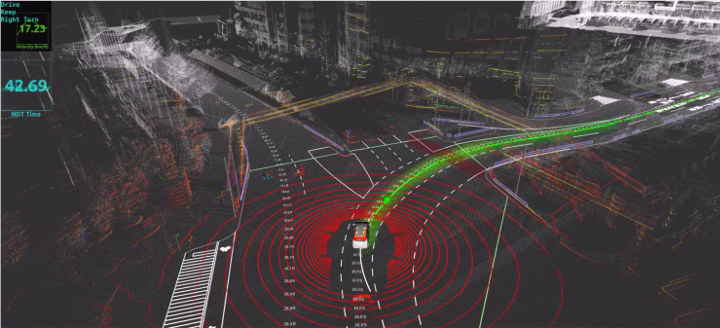All major automotive companies, and some technology companies are all working on autonomous driving with the ultimate goal of achieving level 5 autonomous driving meaning no human intervention is needed at any stage.
Development will take some more time, and companies are now competing with closed source software and hardware. But as I browsed through Linaro Connect Bangkok 2019 schedule, I found out there’s an open source autonomous driving software called Autoware.AI.

Several “Autoware” projects are managed by the newly founded Autoware Foundation, a non-profit organization created to develop a synergy between corporate development and academic research in order to provide access to autonomous driving technology for everyone:
- Autoware.AI is the first version built on ROS 1, and Linux, and has been developed as a research and development platform
- Autoware.auto is the second version built on ROS 2, and Linux, with a complete redesign.
-
Autoware.IO is an interface project for Autoware to be extended with proprietary software and third-party libraries for example drivers for sensors, by-wire controllers for vehicles, and hardware-dependent programs for SoC boards.
Autoware supports Localization, Mapping, Object Detection & Tracking, Traffic Light Recognition, Mission & Motion Planning, Trajectory Generation, Lane Detection & Selection, Vehicle Control, Sensor Fusion, Cameras, LiDARs, RADARs, Deep Learning, Rule-based System, Connected Navigation, Logging, and more. Autoware is best suited for urban cities, but highways, freeways, mountainous regions, and geofenced areas can also be supported.

While in theory, you could use Autoware with actual autonomous vehicles, you may want to get started with something a bit more safe: a ROSBAG-based simulator that allows you to try it out with demo data. You’ll need a fairly powerful computer for the simulation as an 8-core Intel processor combined with 32GB RAM and an NVIDIA Geforce 980M GPU or greater is recommended. Alternatively, it’s also possible to run Autoware on NVIDIA DRIVE PX2 / Xavier, or Linaro “Syncquacer” Developer Box, but the latter is not recommended since it lacks performance and some features are not supported.
Autoware is released under an Apache 2.0 license with source code and documentation available on Github. You may also want to visit Autoware.org for more details. The project may end-up in actual vehicles as companies like Arm, Linaro, LG, Huawei, SiFive, Intel, Xilinx, and TRI-AD are all members of the Autoware Foundation. I could not see any car manufacturers directly involved, but TRI-AD stands for “Toyota Research Institute Advanced Development Inc.”, a new company (July 2018) established by Toyota Motor, Aisin Seiki and Denso with the goal of hiring about 1,000 staff working on “fully-integrated, production-quality software for automated driving”.

Jean-Luc started CNX Software in 2010 as a part-time endeavor, before quitting his job as a software engineering manager, and starting to write daily news, and reviews full time later in 2011.
Support CNX Software! Donate via cryptocurrencies, become a Patron on Patreon, or purchase goods on Amazon or Aliexpress




